Amirhossein Arzani
Physics-constrained coupled neural differential equations for one dimensional blood flow modeling
Nov 08, 2024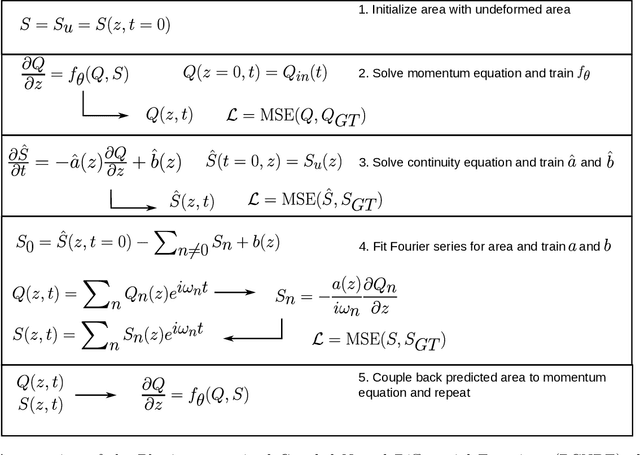

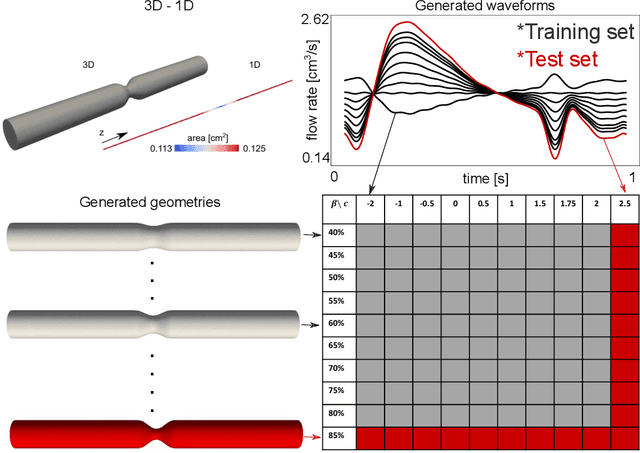

Abstract:Computational cardiovascular flow modeling plays a crucial role in understanding blood flow dynamics. While 3D models provide acute details, they are computationally expensive, especially with fluid-structure interaction (FSI) simulations. 1D models offer a computationally efficient alternative, by simplifying the 3D Navier-Stokes equations through axisymmetric flow assumption and cross-sectional averaging. However, traditional 1D models based on finite element methods (FEM) often lack accuracy compared to 3D averaged solutions. This study introduces a novel physics-constrained machine learning technique that enhances the accuracy of 1D blood flow models while maintaining computational efficiency. Our approach, utilizing a physics-constrained coupled neural differential equation (PCNDE) framework, demonstrates superior performance compared to conventional FEM-based 1D models across a wide range of inlet boundary condition waveforms and stenosis blockage ratios. A key innovation lies in the spatial formulation of the momentum conservation equation, departing from the traditional temporal approach and capitalizing on the inherent temporal periodicity of blood flow. This spatial neural differential equation formulation switches space and time and overcomes issues related to coupling stability and smoothness, while simplifying boundary condition implementation. The model accurately captures flow rate, area, and pressure variations for unseen waveforms and geometries. We evaluate the model's robustness to input noise and explore the loss landscapes associated with the inclusion of different physics terms. This advanced 1D modeling technique offers promising potential for rapid cardiovascular simulations, achieving computational efficiency and accuracy. By combining the strengths of physics-based and data-driven modeling, this approach enables fast and accurate cardiovascular simulations.
ADAM-SINDy: An Efficient Optimization Framework for Parameterized Nonlinear Dynamical System Identification
Oct 21, 2024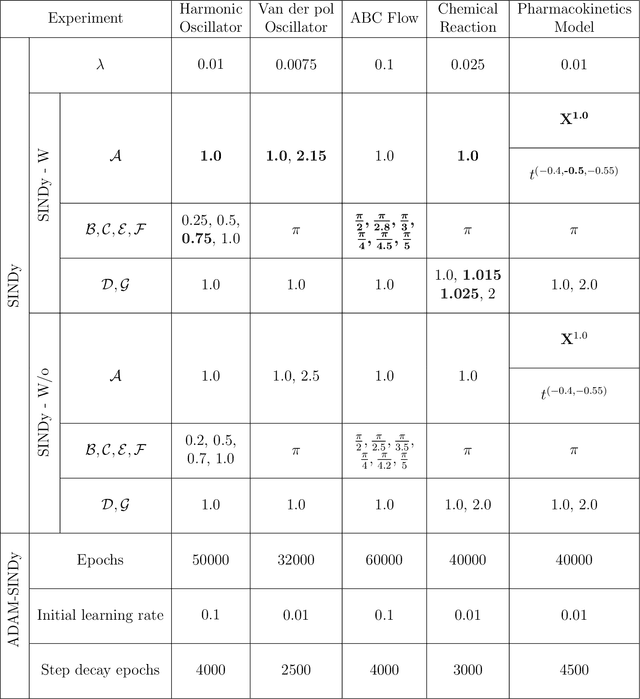
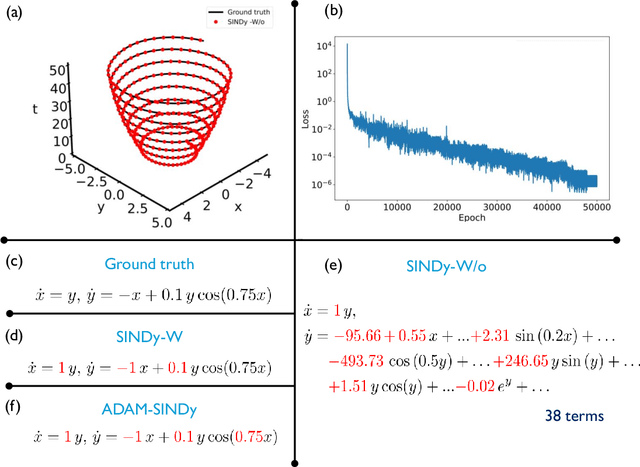
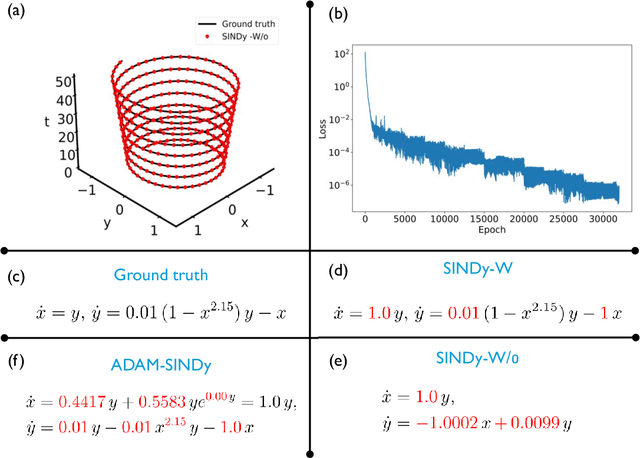
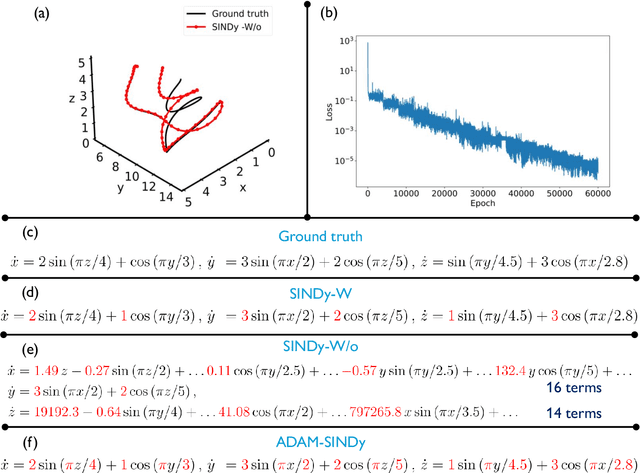
Abstract:Identifying dynamical systems characterized by nonlinear parameters presents significant challenges in deriving mathematical models that enhance understanding of physics. Traditional methods, such as Sparse Identification of Nonlinear Dynamics (SINDy) and symbolic regression, can extract governing equations from observational data; however, they also come with distinct advantages and disadvantages. This paper introduces a novel method within the SINDy framework, termed ADAM-SINDy, which synthesizes the strengths of established approaches by employing the ADAM optimization algorithm. This facilitates the simultaneous optimization of nonlinear parameters and coefficients associated with nonlinear candidate functions, enabling precise parameter estimation without requiring prior knowledge of nonlinear characteristics such as trigonometric frequencies, exponential bandwidths, or polynomial exponents, thereby addressing a key limitation of SINDy. Through an integrated global optimization, ADAM-SINDy dynamically adjusts all unknown variables in response to data, resulting in an adaptive identification procedure that reduces the sensitivity to the library of candidate functions. The performance of the ADAM-SINDy methodology is demonstrated across a spectrum of dynamical systems, including benchmark coupled nonlinear ordinary differential equations such as oscillators, chaotic fluid flows, reaction kinetics, pharmacokinetics, as well as nonlinear partial differential equations (wildfire transport). The results demonstrate significant improvements in identifying parameterized dynamical systems and underscore the importance of concurrently optimizing all parameters, particularly those characterized by nonlinear parameters. These findings highlight the potential of ADAM-SINDy to extend the applicability of the SINDy framework in addressing more complex challenges in dynamical system identification.
Interpreting and generalizing deep learning in physics-based problems with functional linear models
Jul 10, 2023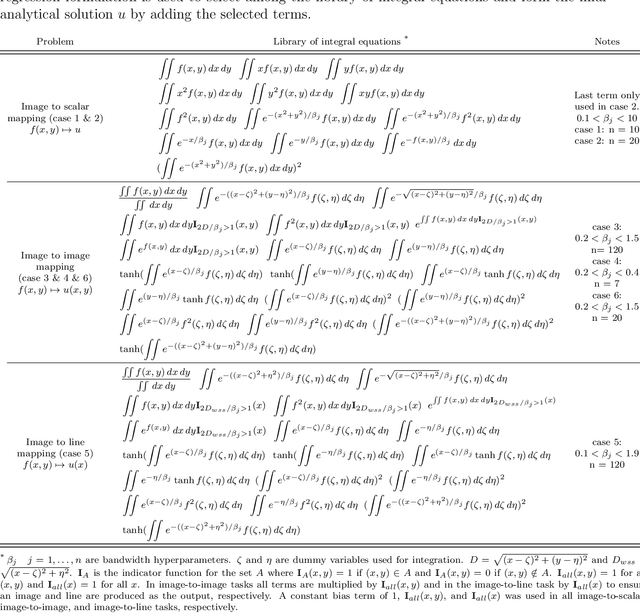
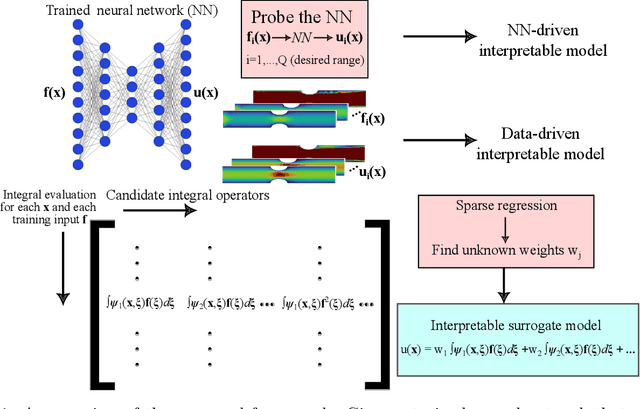
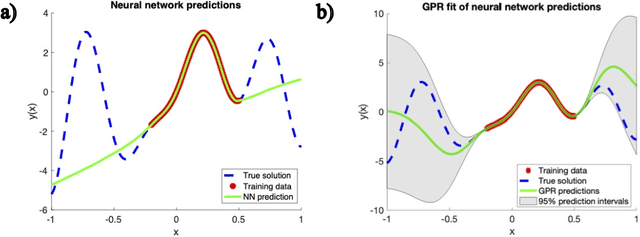

Abstract:Although deep learning has achieved remarkable success in various scientific machine learning applications, its black-box nature poses concerns regarding interpretability and generalization capabilities beyond the training data. Interpretability is crucial and often desired in modeling physical systems. Moreover, acquiring extensive datasets that encompass the entire range of input features is challenging in many physics-based learning tasks, leading to increased errors when encountering out-of-distribution (OOD) data. In this work, motivated by the field of functional data analysis (FDA), we propose generalized functional linear models as an interpretable surrogate for a trained deep learning model. We demonstrate that our model could be trained either based on a trained neural network (post-hoc interpretation) or directly from training data (interpretable operator learning). A library of generalized functional linear models with different kernel functions is considered and sparse regression is used to discover an interpretable surrogate model that could be analytically presented. We present test cases in solid mechanics, fluid mechanics, and transport. Our results demonstrate that our model can achieve comparable accuracy to deep learning and can improve OOD generalization while providing more transparency and interpretability. Our study underscores the significance of interpretability in scientific machine learning and showcases the potential of functional linear models as a tool for interpreting and generalizing deep learning.
 Add to Chrome
Add to Chrome Add to Firefox
Add to Firefox Add to Edge
Add to Edge